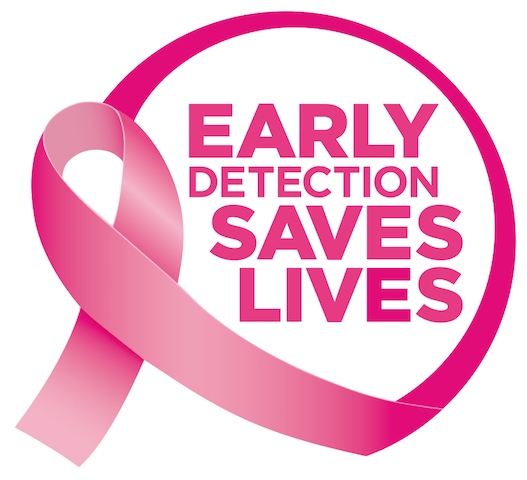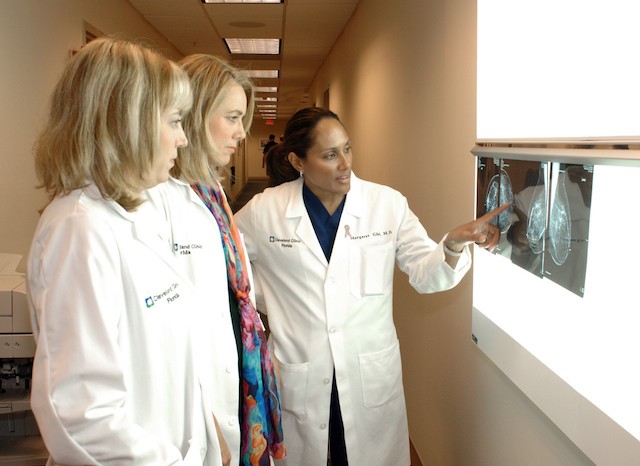
Did you know that one in eight women will be diagnosed with breast cancer in her lifetime? The fact that is even more important than the somewhat startling statistic is that early diagnosis and treatment offers the highest rate of survival.
“The word cancer is no longer a death sentence and has not been for many years,” said Dr. Arlington Lightbourne, who specializes in wellness. “The important thing is to find the best health care possible. Ideally, we would all like to be treated at home and fortunately, we have physicians returning to The Bahamas after advanced postgraduate training in oncology care and surgery. However, there are those situations which are better served by the diagnostics that are not available in a place like The Bahamas where a small population base makes it difficult to purchase, operate and maintain the incredibly expensive array of equipment.”
Still, says Dr. Lightbourne, the first line of defense is the woman’s own knowledge and awareness of changes in her body.
“We urge women from the time they are in their 20s to be aware of their bodies and know what to watch for,” said Dr. Lightbourne. “It is that ability to recognize subtle symptoms and warning signs that are the best predictors of success in defeating cancer and going on to live a full and productive life.”
“The first step you can take is to become familiar with how your breasts look and feel,” says Elizabeth Stone, MD, Cleveland Clinic Florida breast oncologist. Many women choose to perform self-breast exams so they will know if a new lump appears or an existing lump changes size. However, self-breast exams are not a substitute for mammograms, which can uncover breast cancer early on, even before symptoms appear.
Although a lump or mass in the breast is the most common symptom, not all lumps are cancer. Other benign breast conditions such as cysts can also cause lumps. Normal breast tissue may be lumpy, but knowing your own breasts will help you identify any changes you should become suspicious of, such as:
- a lump or mass in or near your breast or under your arm
- changes in the size or shape of your breast
- swelling in or around your breast, collarbone or armpit
- nipple changes, such as retraction or a turning inward
- nipple discharge, especially if the fluid is bloody
- changes such as dimpling, thickening, puckering, irritation or redness of the skin
- breast or nipple soreness or pain
- warmth and itching of the breast
If you are exhibiting any of the above symptoms, schedule an appointment with your physician as soon as possible.
“These changes may not be due to cancer, but you should be evaluated to rule out the possibility,” says Dr. Stone, who notes that there are more sophisticated screening and diagnostic tools than ever including digital mammography, 3D mammography, breast ultrasound, breast MRI and breast CAD (computer-aided detection).
Breast cancer can also develop without any warning signs, and in its early stages may not present symptoms. That’s why it’s important to follow the recommended screening guidelines. According to the American Cancer Society, women age 40-44 should begin talking to their physician about their risk factors in consideration of getting a mammogram, and by age 45 they should be getting them annually. Consult with your physician to determine what’s right for you.
“Performing self-breast exams and getting annual mammograms is the most effective routine for early detection. And, discovering breast cancer early on when it’s most treatable, provides a higher chance for a successful outcome,” says Dr. Stone. “Identifying breast cancer before it has had the opportunity to spread can save your life.”
Cleveland Clinic Florida’s Maroone Cancer Center offers comprehensive services for the diagnosis and treatment of breast cancer. Patients benefit from having an accredited Women’s Imaging Center on-site, offering state-of-the-art screening that includes digital mammography, 3D mammography, breast ultrasound, breast MRI and breast CAD (computer-aided detection).
“We offer a multidisciplinary team approach to fighting breast cancer that includes breast oncologists, breast surgeons, radiation oncologists, genetic counselors, a breast navigator, and other support staff. Our focus is on early and accurate detection,” says Dr. Stone.

Early detection best prevention -- Dr. Elizabeth Stone, left, oncologist and breast cancer social worker Cara Kondaki listen as Dr. Margaret Thompson reviews mammography film findings with colleagues at Cleveland Clinic Florida. Meantime, a local physician says more highly qualified specialists are coming home to The Bahamas but it remains important to seek the best services wherever those services are offered because proper early diagnosis can be the difference between life and death.
About Cleveland Clinic Florida
Cleveland Clinic was recently ranked U.S. News & World Report’s No.2 in the Miami-Ft. Lauderdale metro region and eighth in the State of Florida. Cleveland Clinic Florida serves as an important gateway to patients from The Bahamas, the Caribbean and Latin America who are seeking high quality care. For more information about Cleveland Clinic Florida, visit www.clevelandclinicflorida.org. Follow us on Twitter and Facebook.





